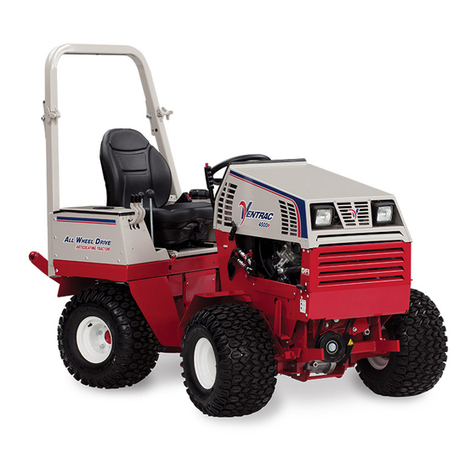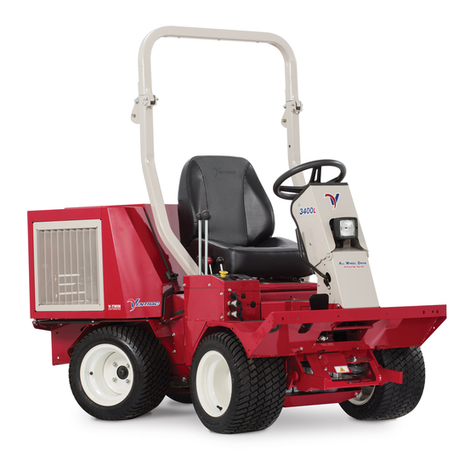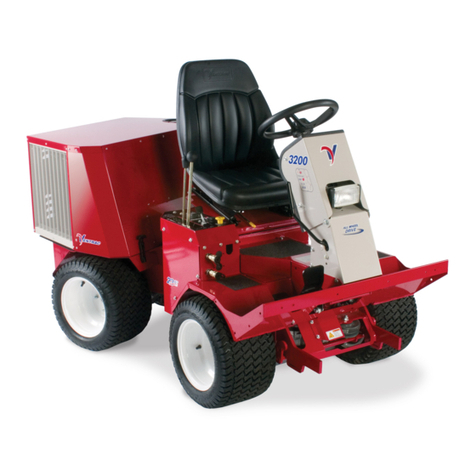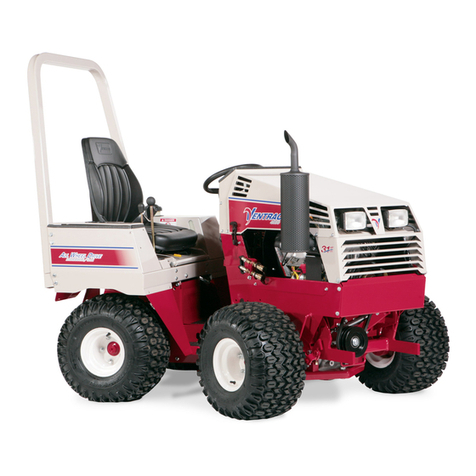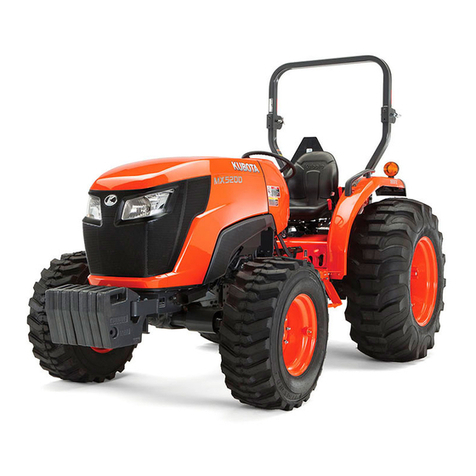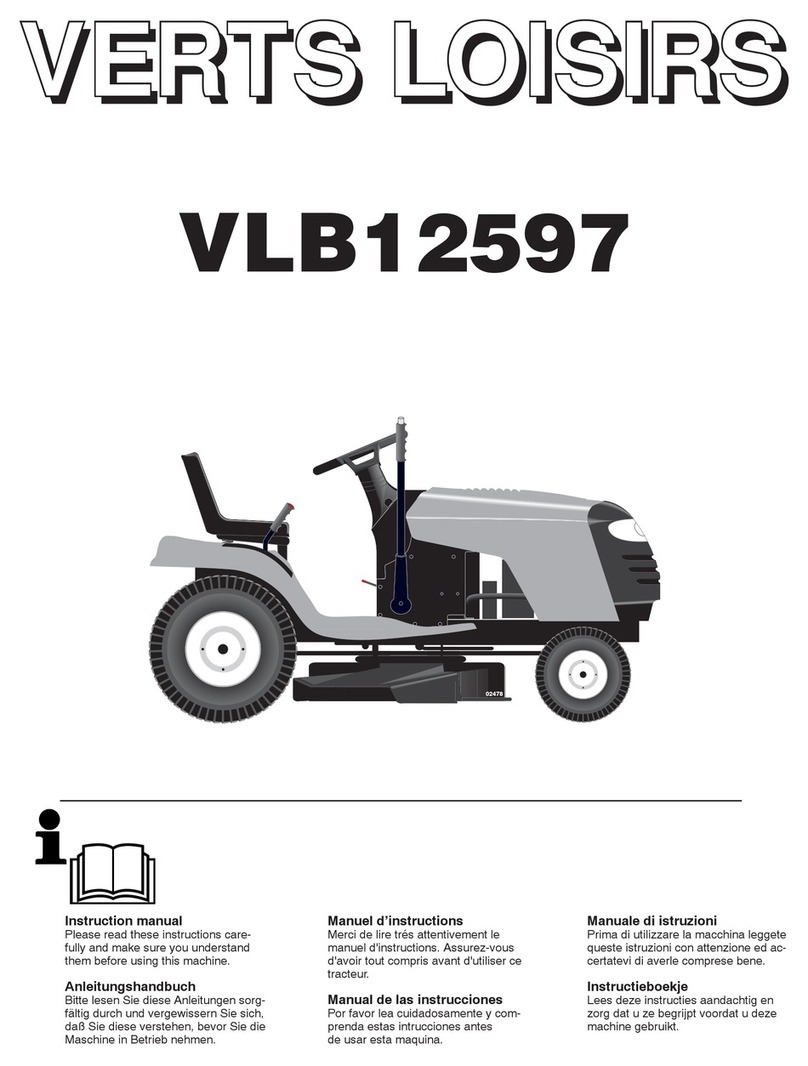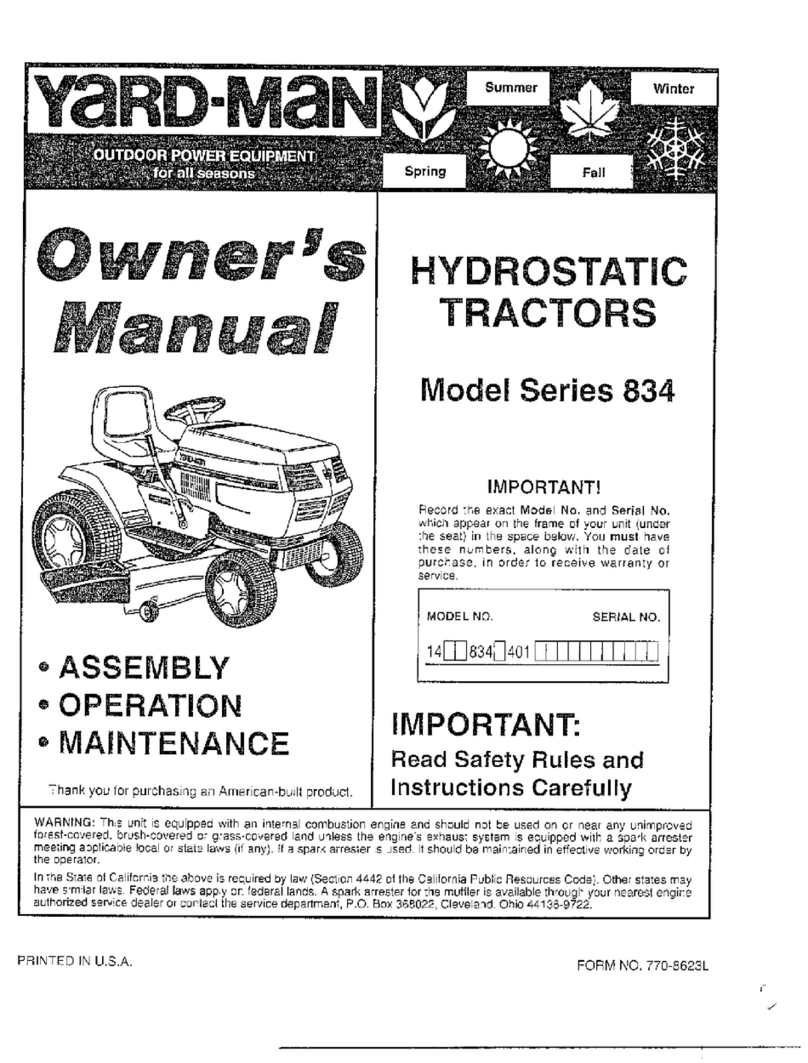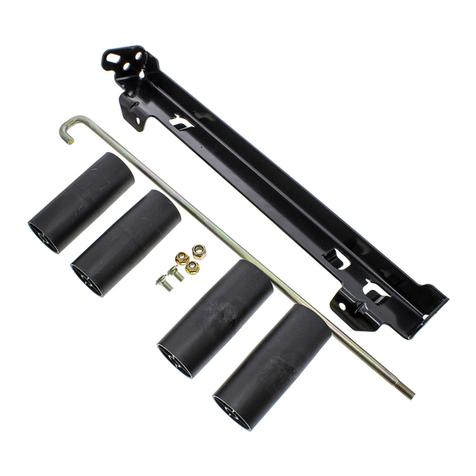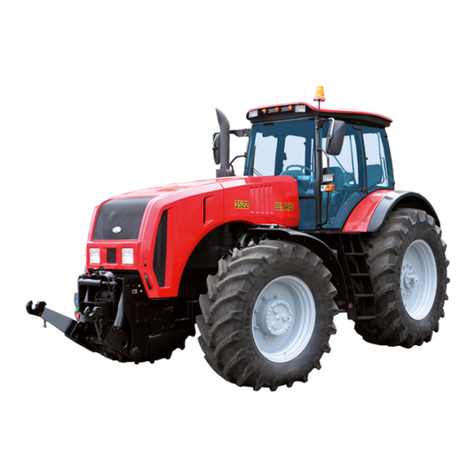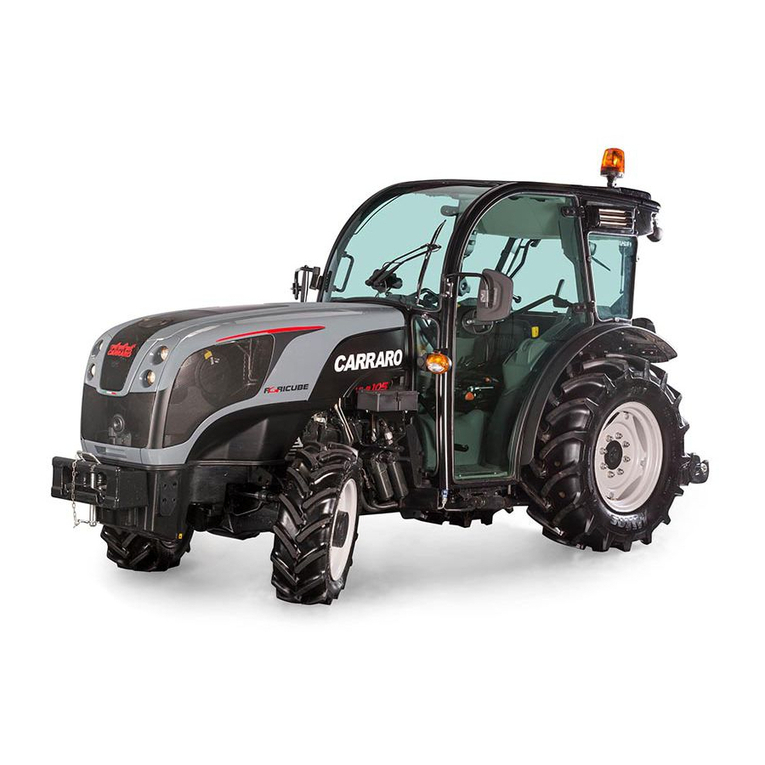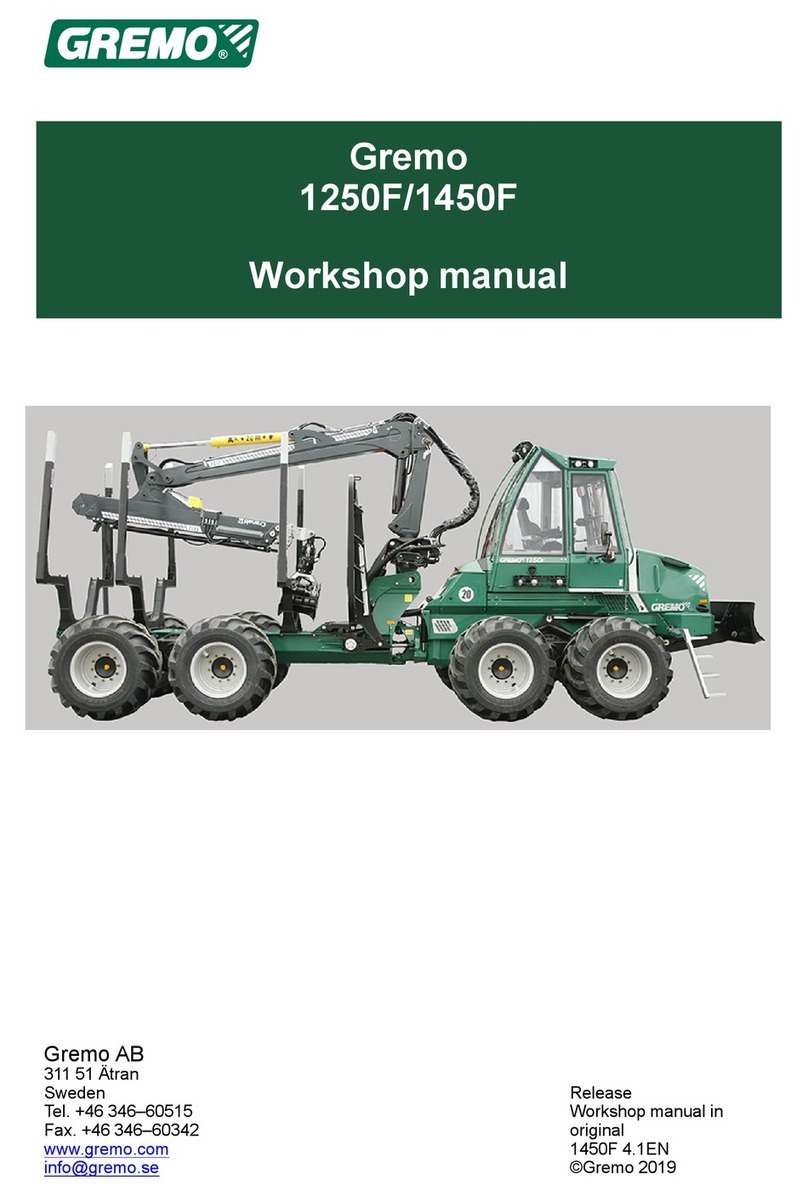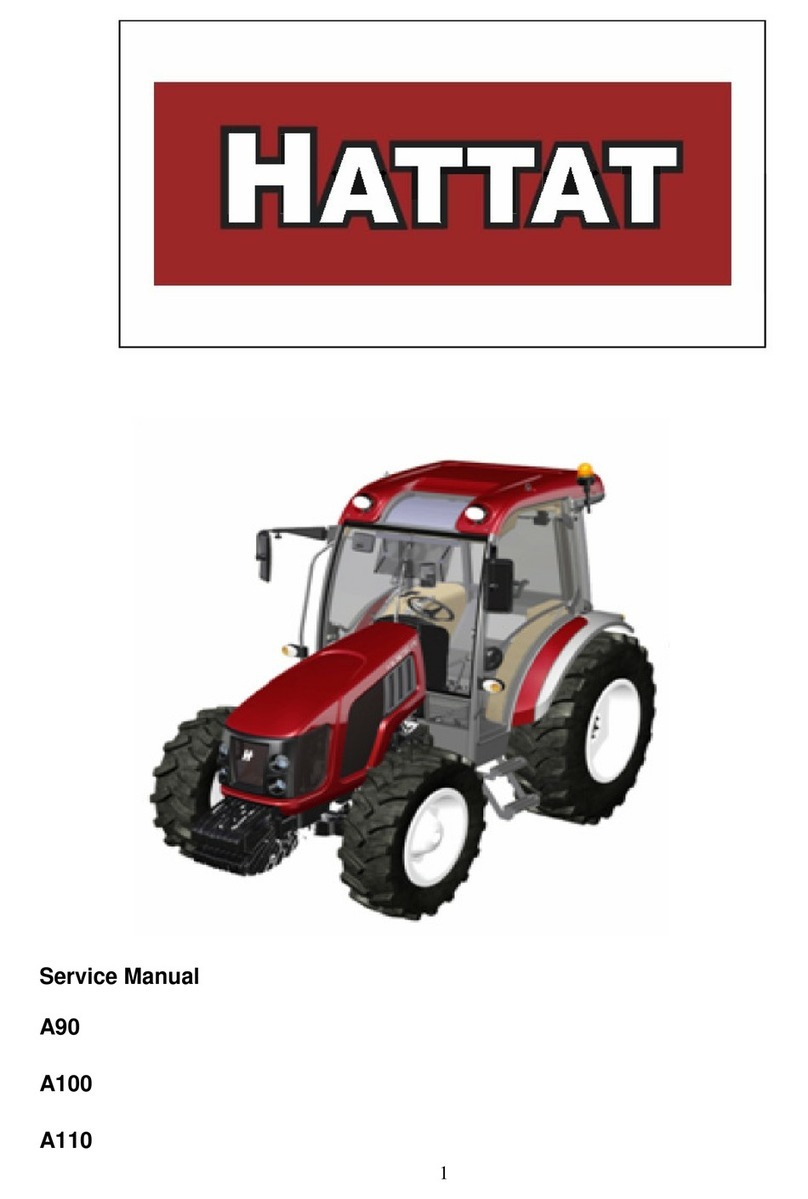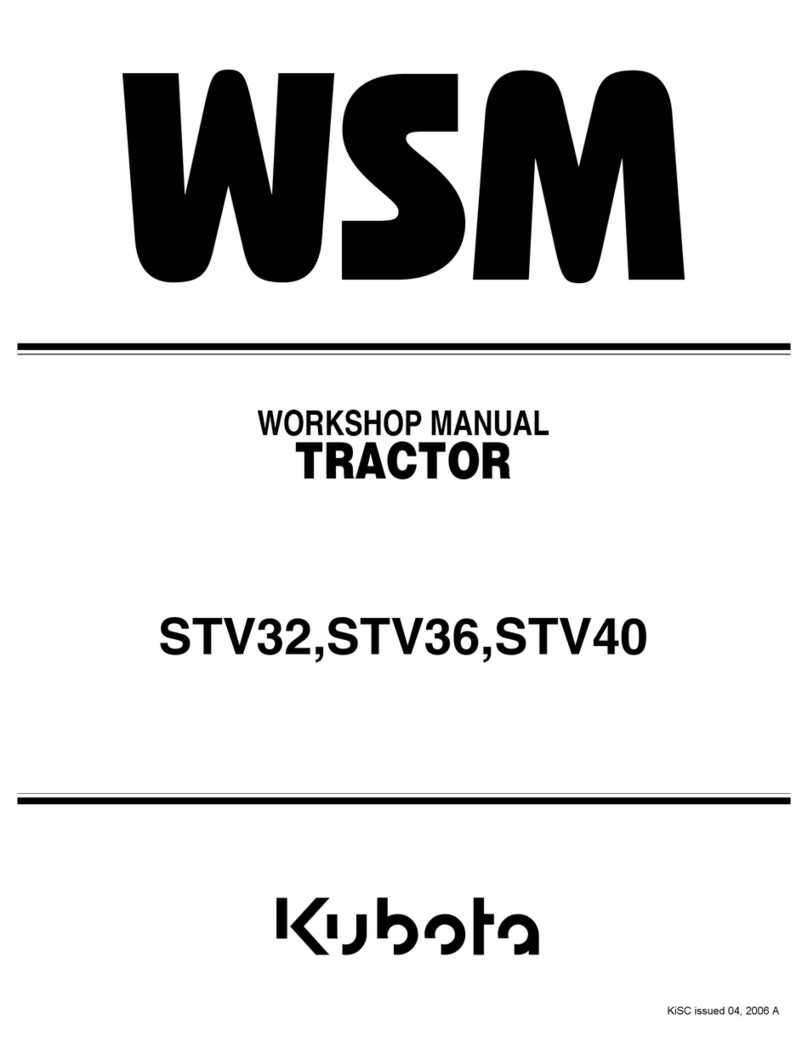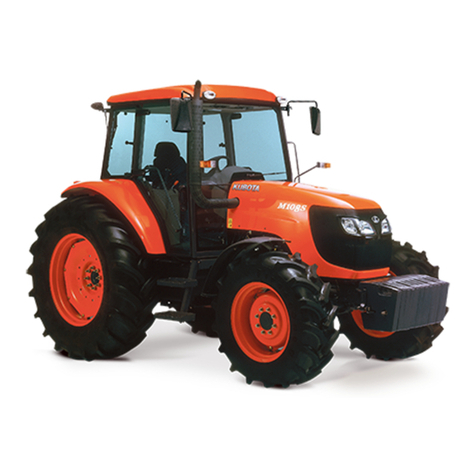
TABLE OF CONTENTS
5
SERVICE PAGE 38
Service And General Maintenance.......................................................................................................38
Cleaning And Appearance Care...........................................................................................................38
Service Access Points..........................................................................................................................39
Lubrication Locations ...........................................................................................................................39
Checking Hydraulic Oil Level ...............................................................................................................40
Checking Rear Transaxle Oil ...............................................................................................................41
Changing Hydraulic Oil Filters..............................................................................................................41
Changing Hydraulic Oil ........................................................................................................................42
Changing Rear Transaxle Differential Oil.............................................................................................43
Servicing Closed Loop Hydrostatic Drive Circuit..................................................................................43
Servicing Hydraulic Oil Cooler .............................................................................................................43
Checking Engine RPM.........................................................................................................................43
Checking Engine Oil Level...................................................................................................................44
Changing Engine Oil And Filter ............................................................................................................44
Changing Air Filter Elements................................................................................................................45
Filling The Fuel Tank ............................................................................................................................46
Changing The In-line Fuel Filter...........................................................................................................46
Fuel Filter / Water Separator................................................................................................................46
Priming The Fuel System.....................................................................................................................46
Checking The Fan (Alternator) Belt......................................................................................................47
Adjusting Fan (Alternator) Belt Tension................................................................................................47
Cleaning Engine Compartment & Engine ............................................................................................47
Servicing The Cooling System.............................................................................................................48
Checking The Cooling System.............................................................................................................48
Cleaning The Radiator And Screen......................................................................................................49
Draining The Cooling System ..............................................................................................................49
Flushing The Cooling System ..............................................................................................................49
Servicing The Battery...........................................................................................................................50
Removing The Battery .........................................................................................................................50
Installing The Battery ...........................................................................................................................50
Cleaning The Battery And Terminals....................................................................................................51
Charging The Battery ...........................................................................................................................51
Jump Starting Procedure .....................................................................................................................51
TCM (Tractor Control Module) Explanation .........................................................................................52
Replacing Fuses (Power Relay Module)..............................................................................................52
Replacing Fuses (Front Fuse Panel) ...................................................................................................52
Replacing Fuses (Rear Fuse Panel)....................................................................................................53
Replacing Fuses (Engine)....................................................................................................................53
Replacing Light Bulbs (Headlights & Work Lights)...............................................................................54
Replacing The Taillights .......................................................................................................................54
Replacing The Turn Signal Lights ........................................................................................................54
Replacing The Strobe Light Bulb .........................................................................................................54
PTO Belt Inspection .............................................................................................................................55
PTO Belt Tension Adjustment ..............................................................................................................55
PTO Belt Replacement ........................................................................................................................55

